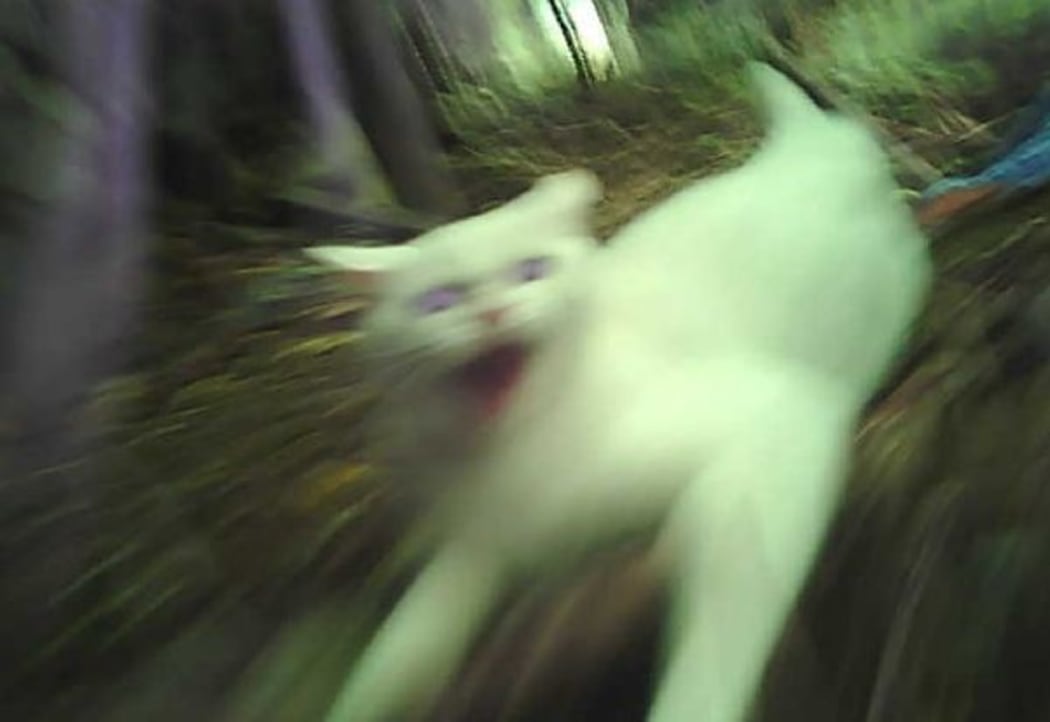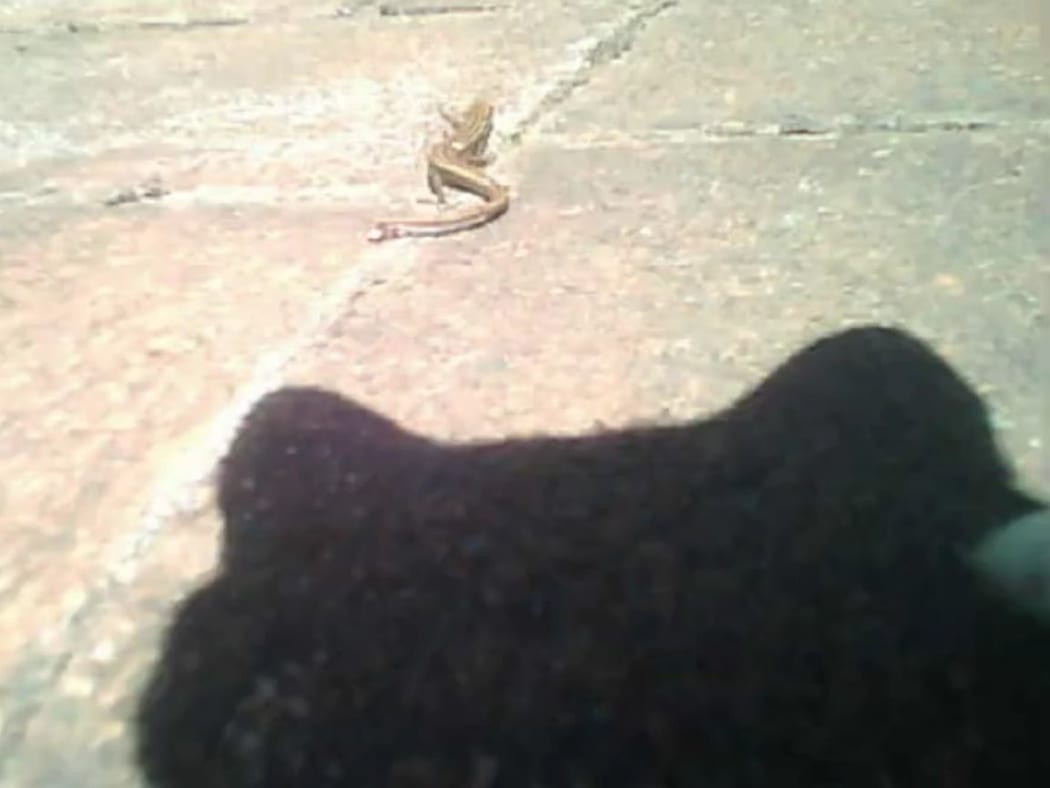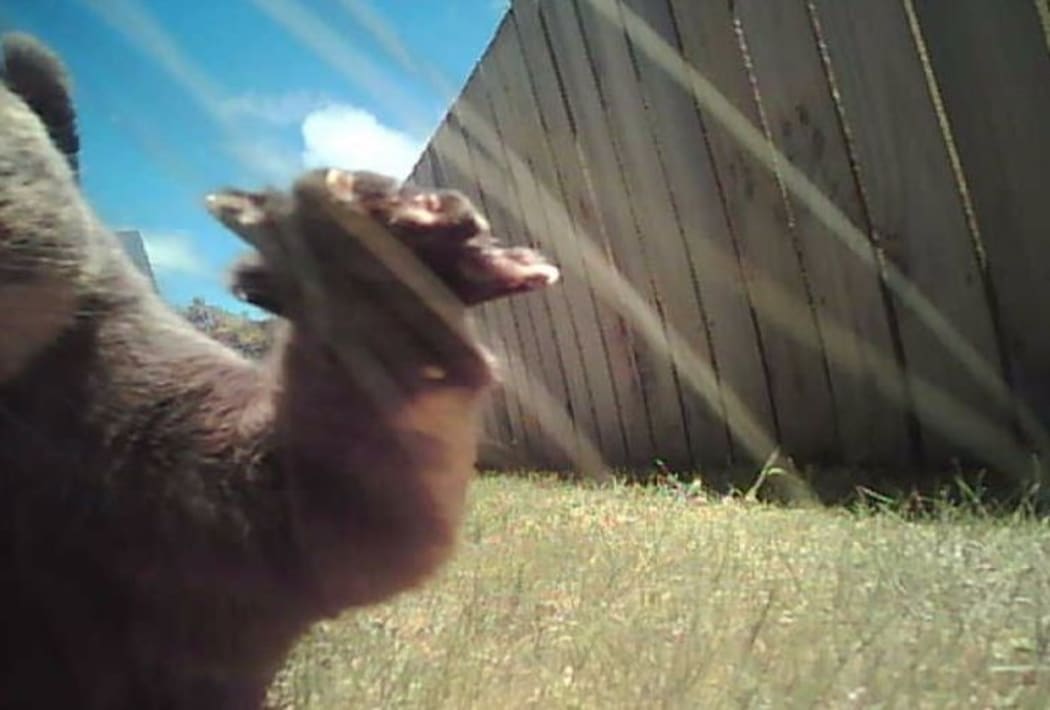Are cat biscuits a poor substitute for skink and bird? Does our familiar friend turn into 'killer kitty' when our backs are turned?
The private lives of cats have become an open secret after researchers attached small cameras to the collars of cats that live around Zealandia, a protected conservation area in Wellington.
Ten people volunteered their cats for the study, the aim of which was to find out just what cats do all day and all night
When the cats moved, it activated tiny cameras on their collar.

A cat fight caught by one of the cameras worn on the cat's collar. Photo: SUPPLIED
Kim Wright found out that while her cat 'Pickles' did not dine out on raw bird, she did have a penchant for the finer things in life.
"You can just hear her camera banging against the bell she's wearing. Now she walks in the cellar. She found a beautiful wine cellar full of champagne. But she hasn't been trained to try to bring anything back."
Ms Wright said the revealing images had led to a rethink.
"On the camera, we've identified that she went as far as two houses up the street and then four houses a way down the street ... right through peoples' backyards and trying to get inside their houses. We thought she was a real homebody, so that was the biggest surprise I suppose for us that she actually had a much more interesting life than we thought," she said.
Victoria University post-doctoral fellow and ecologist Heidy Kikillus, and her research assistant Mya Gaby analysed 80 hours of cat footage.
Heidy Kikillus said despite Gareth Morgan calling cats 'natural born killers' no birds or rodents were killed by cats on camera.

Four skinks and geckos were killed over the period of the survey. Photo: SUPPLIED
But 11 invertebrates and four lizards were, and owners reported off-camera kills including one bird, two lizards and a mouse.
She said it was important to get a New Zealand perspective on cat behaviour.
"New Zealand is so drastically different because we have no native mammals here, except for bats and sea lions, and cats are essentially the top of the food chain. In America, the cats themselves have predators ... whereas as mentioned in New Zealand, the only thing cats have to worry about are perhaps traffic accidents and Gareth Morgan," she said.
The cats in the study spent most of their time - 40 percent - mooching around outside or as the study called it "investigating".
A third of their life was spent inside their house.

No birds or rodents were killed by cats on camera. Photo: SUPPLIED
Crossing roads accounted for 6 percent, while trying to catch and kill other animals accounted for only 0.2 percent of their time.
An economist at the Morgan Foundation, Geoff Simmons, crunched the cat-cam statistics and said they made a grim total.
"Four skinks and geckos were killed over that time period. So that's an average actually of one skink or gecko per day, per cat."
Heidy Kikillus said the cat-cam study had only just 'scratched' the surface and more research is needed.
She said she was keen to get 500 cats wearing GPS trackers, generating maps of their movements.
The results will be compared with the GPS ranging patterns of cats being tracked in the United States and Australia.

